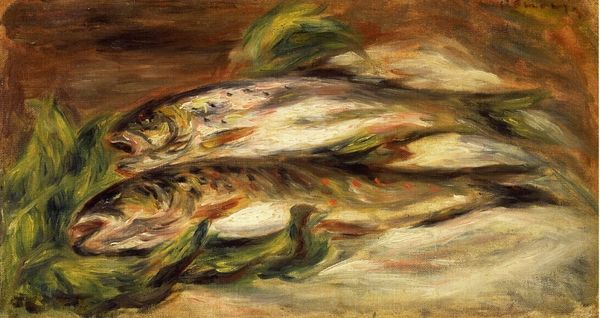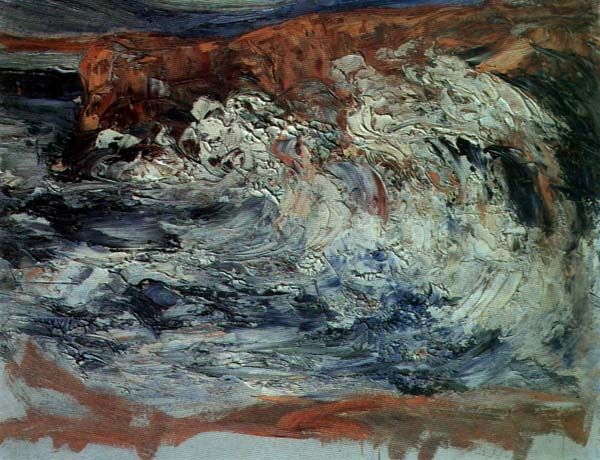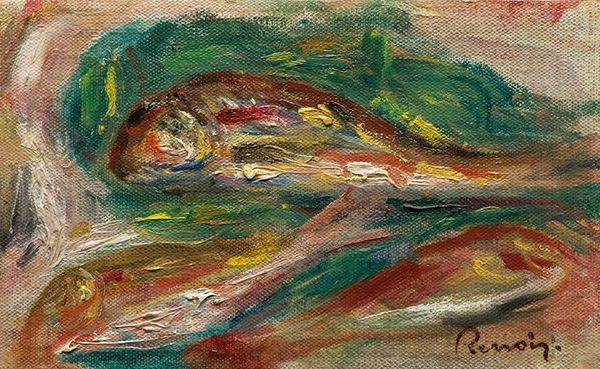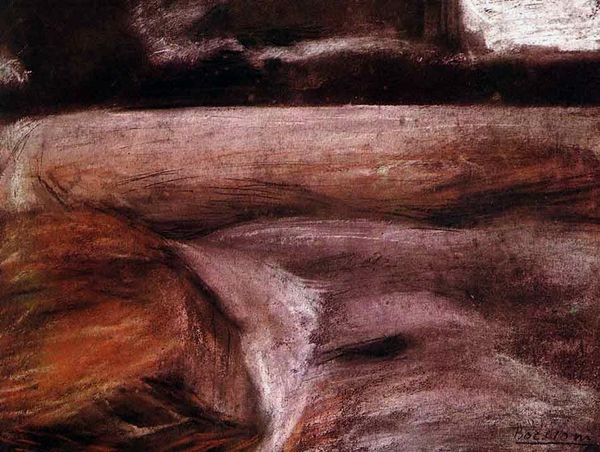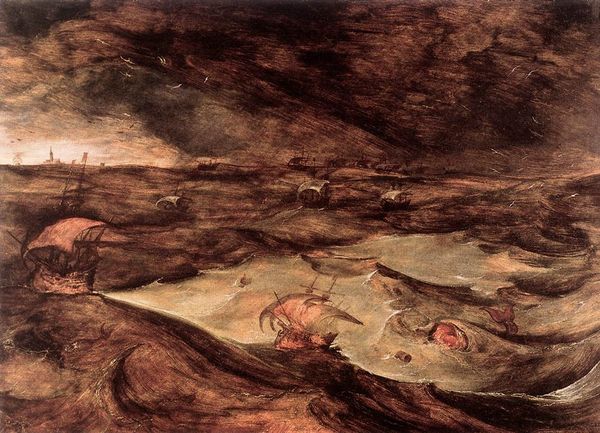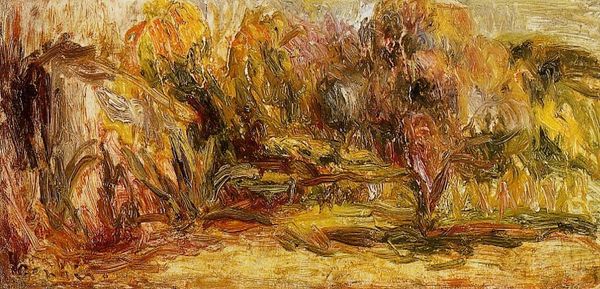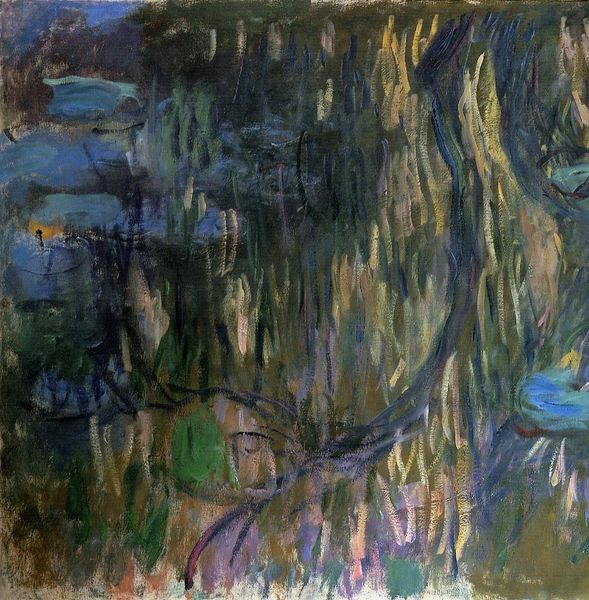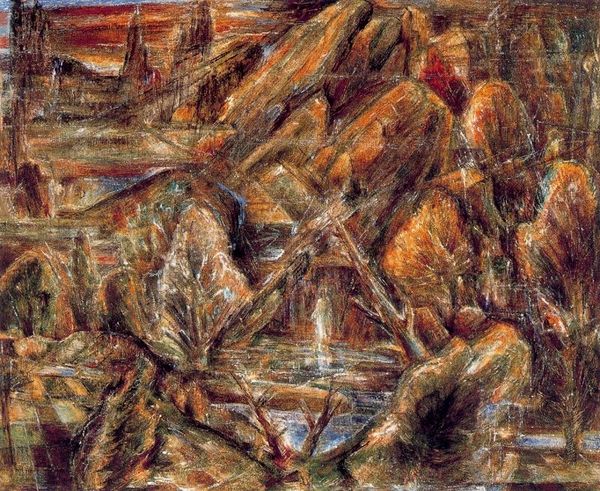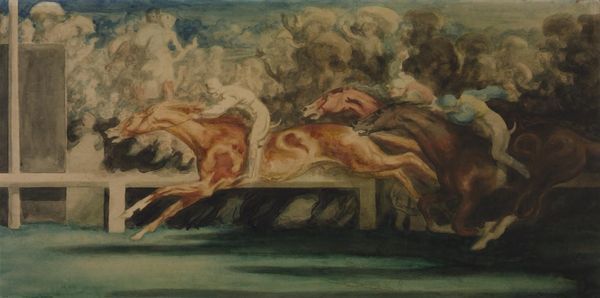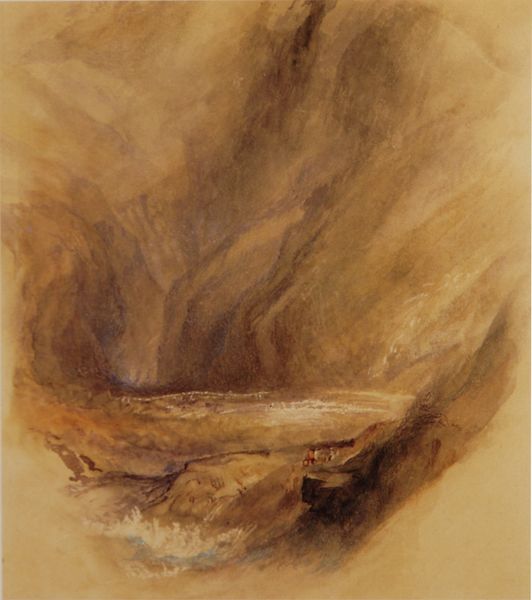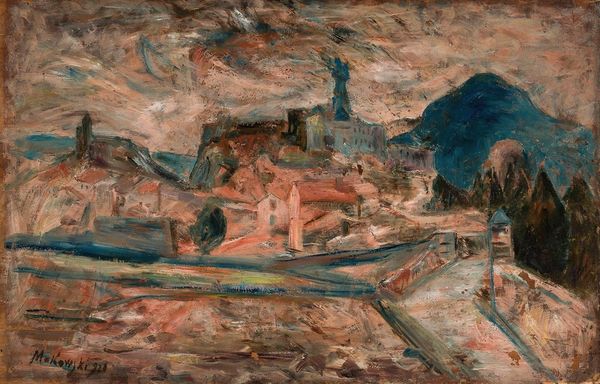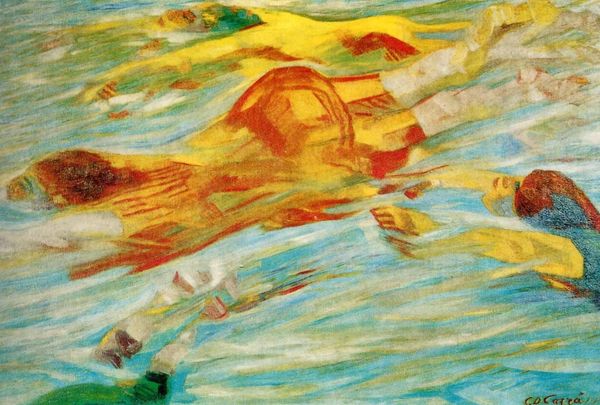
#
abstract expressionism
#
abstract painting
#
charcoal drawing
#
possibly oil pastel
#
charcoal art
#
oil painting
#
fluid art
#
acrylic on canvas
#
underpainting
#
watercolor
Copyright: Public domain
Curator: This is Pierre-Auguste Renoir's "Fish," created around 1919. It is currently held in a private collection. Editor: My first impression? Muted, almost mournful. The colours are so desaturated, and the brushstrokes blur the forms—it feels less like looking at fish and more like a memory of fish. Curator: It's fascinating to consider Renoir's late-career still lifes like this. His focus shifted increasingly toward capturing light and texture, which becomes quite clear if you consider what went into creating it. The layers upon layers of paint, the rough canvas texture showing through, all pointing to a preoccupation with process. Editor: Absolutely. And I think that blurred, dreamlike quality reflects the turmoil of the post-World War I era. The painting seems to ask us about mortality, doesn't it? And our own complicity in systems of consumption and exploitation that bring us this bounty. The materiality isn't just about the paint. It is about what these fish signify historically, culturally. Who are the consumers of the fish and what are their relationships to those doing the fishing and the environments at risk? Curator: Very much so. One also has to consider how works such as these enter the private market—their exchange values and symbolic capital. It raises important questions around commodity and access. Who ultimately can own an image such as this? Editor: And beyond ownership, who gets to interpret and control the narrative? Are we, as viewers, active participants in unpacking its meanings or passive recipients of some pre-determined interpretation? There are clear gender dynamics at work. In Renoir's context and our own, is there consideration about the roles women play in shaping the social meanings of artwork such as these? Curator: I find the blurring of the fish themselves to be significant. Is Renoir emphasizing the mass or de-emphasizing individuality of it? Either reading sheds insight to the working practices and commodification that goes into depicting the final product that’s consumable. Editor: The painting provides a stark yet gentle reminder that, in so many aspects of life, one person’s bounty can become another’s burden. Curator: Agreed, viewing this through those contextual and material lenses, one could certainly infer that, in "Fish," Renoir offers not just a depiction, but an examination into the ethics surrounding labor, consumption, and the artistic process itself. Editor: Yes, precisely! The conversation Renoir ignites transcends his time. It's a timeless provocation, inviting us to confront some difficult realities around art and culture and maybe, by seeing it differently, to change them.
Comments
No comments
Be the first to comment and join the conversation on the ultimate creative platform.
